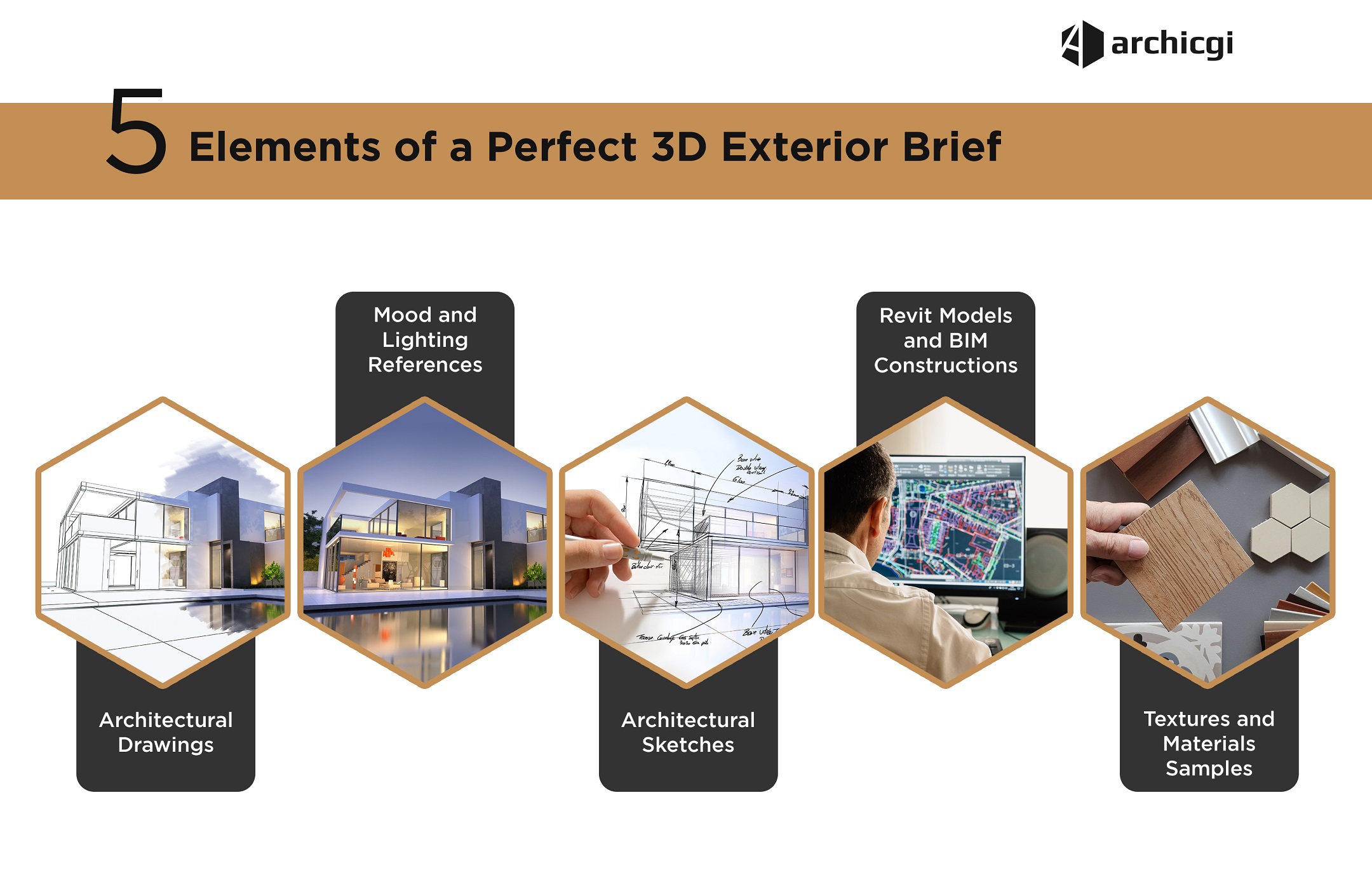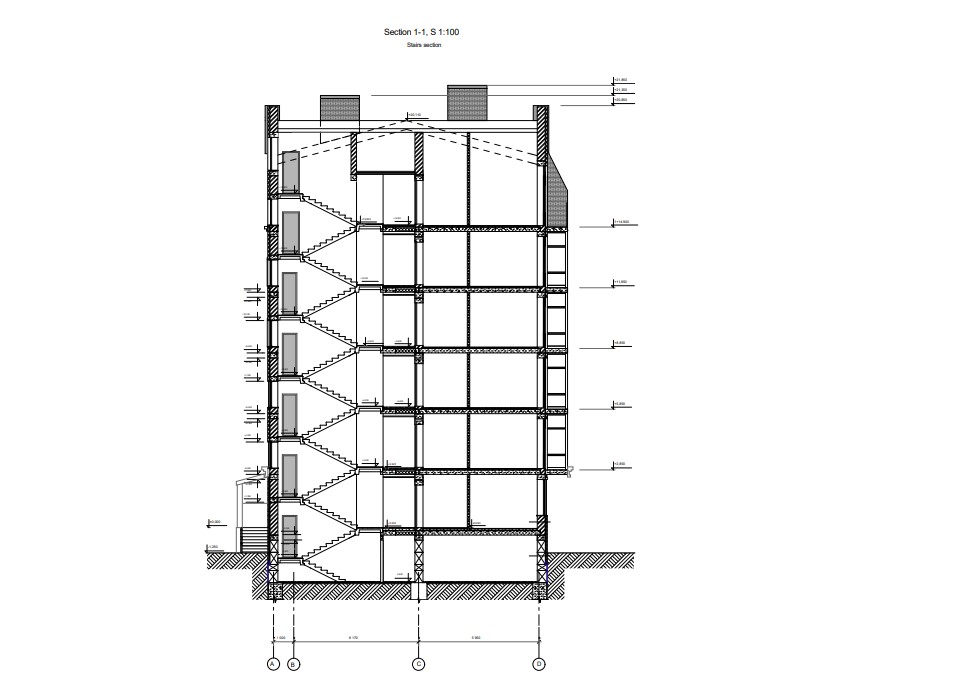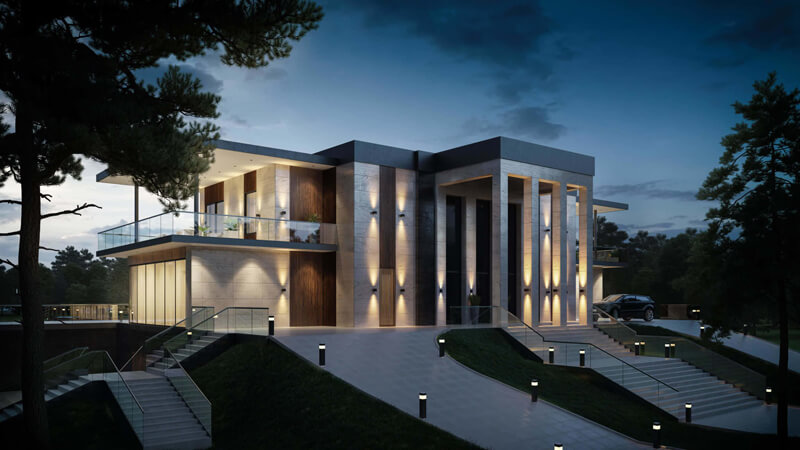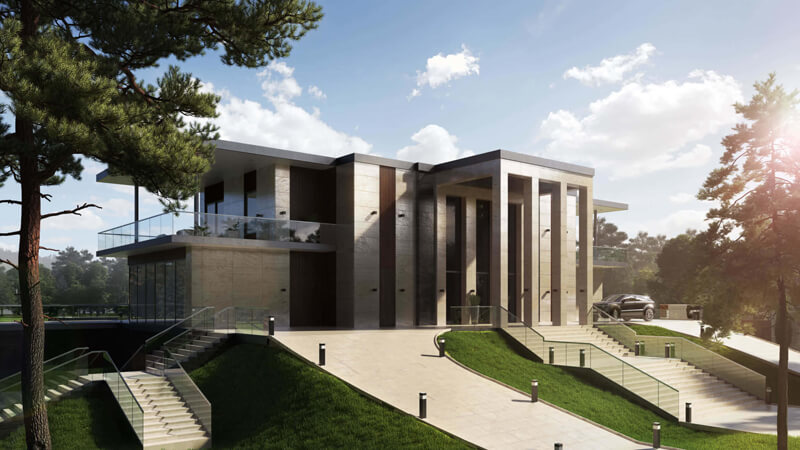Exterior renderings are an effective option to present architectural projects to clients as accurately and clearly as possible. Moreover, they are a perfect choice for marketing visual materials thanks to their photorealism and high quality.
Let’s imagine an Architect wants to get images that precisely recreate his ideas and help to present them. He wants exterior renderings to include a stylish facade of a villa that fits perfectly in a tropical landscape. Another idea of his is to put a terrace in front of the building and show the tenants relaxing on a lounge chair or in a pool. Moreover, he wants to show his clients not only a sunny daylight scene but also the evening scenario of exterior lighting in order to highlight all the benefits of a project. But how can the Architect explain the picture in his mind to 3D Artists? Where does he start and what can help him to convey the concept for an ideal architectural rendering service? We will give tips on how to do it and what references to use for the best result.
Primary References
#1. Architectural Drawings
The accurate conveying of architectural ideas depends on drawings of a project. Among all drafting types, the site plan is the most basic for 3D exterior rendering services. Thanks to this drawing, 3D Artists can understand surroundings and create an environment for renderings, be it an urban area, countryside, or tropical zone. It also allows recreating the architectural ensemble around the main exterior. A site plan is more than enough for making renderings for presentations or marketing campaigns. However, working with contractors requires other types of drawings.
The preparation for the construction process sometimes includes photorealistic exterior renderings as a reference to the finished result. Builders, engineers, and finishing workers need more detailed 3D visualization, so references must be more precise as well. In this case, Architects should send floor plans, elevations, cross-sections, and other construction drawings. Such drafts are recommended to send in CAD or any other format that opens in millwork drafting services software, where 3D Artists can explore all the details.
#2. Mood and Lighting Reference
The most essential element of exterior renderings is the mood that influences how the project is presented. Lighting for 3D rendering is the most important factor for creating an ambiance and evoking emotions in viewers. That’s why Architects should indicate in the brief whether they want the sky cloudless or overcast. If the idea is to demonstrate their work in detail, bright sunlight works better, while for showcasing artificial backlight the night option is a must.
Moreover, it makes sense to send reference images with examples of composition or color schemes. For this, Architects can send one reference picture to show the camera view, one for twilight lighting scenarios, and one more to convey artificial street lights to add and so on. All files are recommended to send in formats such as JPEG, TIFF, GIF, BMP, PNG, SVG.
Secondary References
#3. Architectural Sketches

Every Architect wants to see rough outlines of a project at the early stages, or show clients first developments for approval, he doesn’t need a detailed 3D visualization as his work is only in progress. For this purpose, architectural sketches will be enough for exterior renderings. On top of that, 3D Artists can always add small details here and there during the process or even insert design elements at their discretion. It’s still a convenient option to see what architectural solutions work and what is better to change before the construction.
#4. Revit 3D Models and BIM Constructions

It’s quite a common situation when an Architect chooses CAD drawings and 3D modeling for designing a project but wants photorealistic architectural visualization for presentations and marketing. Hence, if the technical part of the project is already finished, CAD models also can be used for getting accurate and detailed exterior renderings. So one shouldn’t hesitate to send files of BIM constructions, separate BIM objects, rough 3D models, or even samples of BIM elements from Revit families’ websites. All of them will be a good base for recreating a project in realistic CGI. The most common formats of 3D modeling references are stl, 3ds, max, obj.
#5. Textures and Materials Samples

For the most realistic exterior renderings, Architects often send specific samples of the materials they will use in construction. Such samples can be sent either by means of images or by regular links to websites with the chosen options. The same goes for color or pattern samples, as well as finishing variants. It is important to note that the quality of references should be good enough for 3D Artists to recreate all little intricate texture details.
Get your project estimated in just 1 hour - fill out this brief!
By providing these types of references, Architects get perfect exterior renderings that present their ideas and meet all requirements. A high-quality 3D floor plan rendering service, as well as 3D visualization, is an effective tool for project presentations precisely because of how vividly it showcases an exterior’s benefits and features. On top of that, after the construction process is done and clients are satisfied with the result, Architects can use the same exterior renderings for portfolios or professional accounts on social media for promoting their skills and demonstrating successful cases.

Want to impress your clients with stunning visual materials? Use our 3D services and get high-quality, detailed, and photorealistic exterior renders for your architectural project.

Chris Kostanets
Senior Project Manager, Mentor
Chris manages the work of 2 CGI teams and teaches Middle PMs. She loves Scottish landscapes, Ancient Greek culture, and Plein-air painting. At home, Chris is a caring parent for 3 cute chickens and a magnificent rooster.







